Minakami Onsen: Best Hot Springs, Top Ryokan and Things to Do

Minakami Onsen is a hot spring resort in Gunma Prefecture, which can be easily reached from Tokyo in about one hour by train. An ideal destination for a day trip, it has amazing hot springs and Japanese-style inns, which we introduce here.
Minakami Onsen - Gunma's Famous Hot Springs
Minakami Onsen is a hot spring resort town in Minakami, the northernmost point of Gunma prefecture. Along with Kusatsu Onsen and Ikaho Onsen, Minakami Onsen is known for being one of the prominent hot spring areas in the Kanto region.
In recent years, there has been a growing number of activities that take advantage of the natural spots found in this region. Tone River, a river that runs along the side of Minakami where the hot springs are clustered, is a river where you can take part in rafting and canoeing. Along with the nine ski resorts here where you can ski and snowboard in winter, this is a town that has the perfect environment for everybody from kids to adults to be able to enjoy the outdoors.
Table of Contents
1. The Health Benefits and Distinguishing Features of Minakami Onsen
2. How to Get to Minakami Onsen from Tokyo
Day Trips at Minakami Onsen
3. Takaragawa Onsen Takaragawa Mountain Villa
4. Mantenboshi no Yu
5. Suzumori no Yu
Places to visit in Minakami
6. Suwakyo Gorge
7. Lake Naramata
8. Tanigawadake Ropeway
Things to do in Minakami
9. Whitewater Rafting
10. Eco Hiking in Ichinokurasawa Valley
11. Fujiwara Ski Resort
Local Food in Minakami
12. Kadoya Soba
13. Amenimo Makezu
14. Tsukiyonotei Ginnotsuki
15. Minakami Fruits Land Mogitore
16. Garba Cafe
Recommended Japanese-style Inns at Minamikawa Hot Springs
17. A Lodging Where the Moon Smiles - Ominekan
18. Bijin no Yu and Picked Vegetable Cuisine - Sanazawa Terrace
19. Minamikawa Kogen Hotel 200
Tourist Spots and Regional Cuisine Near Minamikawa Hot Springs
The Health Benefits and Distinguishing Features of Minakami Onsen
The quality of water in the hot springs is different in every bath. The most notable quality of water at Minakami Onsen is the calcium sulfate spring. A calcium spring is said to be good for treating bruises and cuts, wounds such as burns, and even breakouts of acne and rashes on the skin. These waters are clear and colorless.
How to Get to Minakami Onsen from Tokyo
For those coming from Tokyo, it’s best to take the JR Joetsu shinkansen. From Tokyo Station, get on the Joetsu Toki shinkansen headed for Niigata and get off at Jomokogen Station. It takes about an hour and 10 minutes, and costs 5390 yen.
Upon arriving at Jomokogen Station, get on the Kanetsu Transport regular route bus and get off at the closest stop to Minakami Onsen, Minakami Station bus stop. It takes about 25 minutes, and costs 620 yen.
By Highway Bus from Shinjuku Station
From Shinjuku's highway bus terminal, Busta Shinjuku fourth floor to Minakami Station, Kan'etsu Highway Bus, the Joshu Yukemura Liner for Minakami Onsen, is available.
One-way tickets are 3300 yen, round trip are 5500 yen. It takes just four hours to travel from Shinjuku Station to Minakami Station on this bus.
Day Trips at Minakami Onsen
Now we’d like to introduce you to the spots at the Minakami Onsen where day visitors can enjoy a hot spring bath. No matter where in the country you look, hot springs are often close to rivers, lakes, and mountains, which means that the views from open-air baths are simply magnificent.
Takaragawa Onsen Takaragawa Mountain Villa
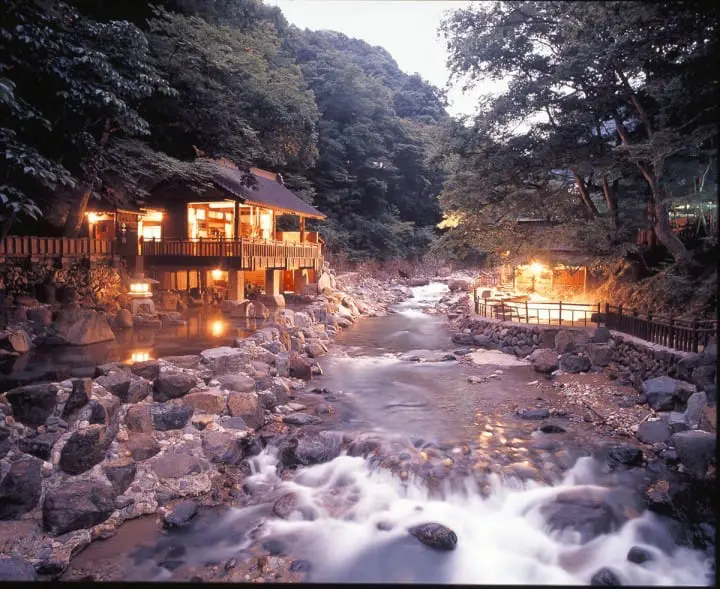
Photo provided by Minamikawa City Tourism Association
As one of the locations in the 2014 Japanese movie "Thermae Romae II", Takaragawa Onsen Osenkaku is a hot spring and Japanese-style inn that’s not only well-known in Japan, but is also now well-known around the world. The hot spring here that is also available to one-day visitors to enjoy is the Takaragawa Onsen Takaragawa Mountain Villa.
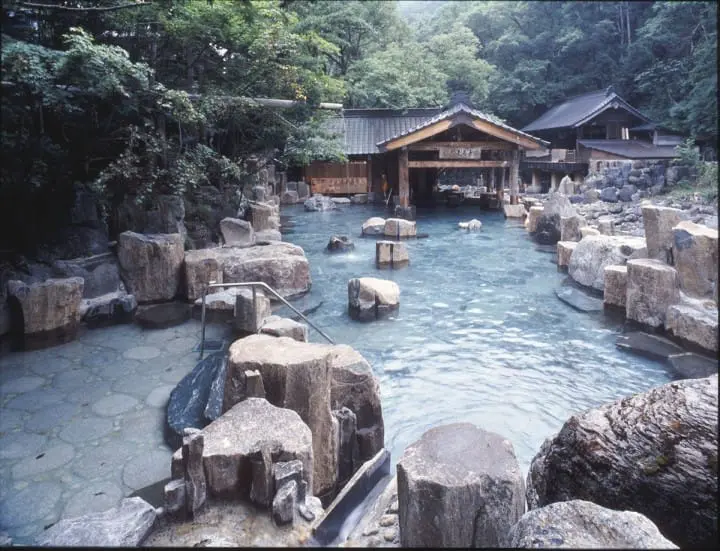
Photo provided by Minamikawa City Tourism Association
The centerpiece here is the large open-air bath that was built to run along the mountain stream. Here there is also mixed bathing, where both men and women enter the same bath, with the bath measuring roughly 200 square meters. Gazing at the river that flows right beside this open-air bath makes it very welcoming.
Day visitors are allowed to enter the baths from 9:00-17:00, but those who are staying at the Japanese-style inn here are allowed to bathe whenever they’d like. For those that would like to soak in the baths here at their leisure, then it’s probably best to book a room.
Fee: Adult 1500 yen (bathing after 15:00 1200 yen), children 1000 yen (bathing after 15:00 800 yen) *consumption and bathing tax included
Hours: 9:00-17:00
Address: Gunma, Tonegun, Minakami, Fujiwara, 1899
Website: http://www.takaragawa.com/english.html
Mantenboshi no Yu


Photos provided by: Minamikawa City Tourism Association
In Japanese, mantenboshi means ‘a perfect score for the stars’, and yu means ‘hot water’ and ‘hot spring’. At night, from this open-air bath, you can see a sky full of perfect stars, which is where this hot spring got its name from. From here you can also enjoy amazing views of Lake Akaya too.
Within the Japanese style ‘Sato no Yu’ and Western-style ‘Tanabata no Yu’ springs, there are an open-air bath and an indoor bath. There is also a restaurant on-site and a free rest area, so visitors can relax both in and out of the springs here.
Fee (for 3 hours): Those older than middle school students 670 yen, children (over the age of 3) 420 yen *consumption and bathing tax included
Address: Gunma, Tonegun, Minakami, Sarugakyo onsen, 1150-1
Hours: 10:00-21:00 (last entrance 20:00)
Closed: Tuesday (open on holidays)
Website: http://www.mantenboshinoyu.com/ (Japanese)
Suzumori no Yu


Photos provided by: Minamikawa City Tourism Association
The source of the water in this onsen comes from an ancient spring bubbling up through the earth since about 20,000,000 years ago. The open-air bath here is in a spot that faces the Ano river, so you can enjoy a stream and seasonal views while soaking in this bath. In particular, the winter scenery is said to be superb.

Photo provided by: Minamikawa City Tourism Association
The indoor bathtub is made from Japanese cypress. This was devised so that you could take in the scent of the tree while bathing. Inside the facilities at Suzumori no Yu is a fishing pond and an area set up for barbecues as well. Wouldn't it be nice to have a soak in a hot spring after enjoying the outdoors here?
Fee (2 hours): Adults 750 yen, elementary students 500 yen, infants (under the age of 3) 400 yen *consumption and bathing tax included
Address: Gunma, Tonegun, Minakami, Anokawa, 1009-2
Hours: 10:00-21:00
Closed: Second Wednesday of each month (closed the next day instead if a holiday; open every day in August)
Website: http://suzumorinoyu.com/ (Japanese)
Places to visit in Minakami
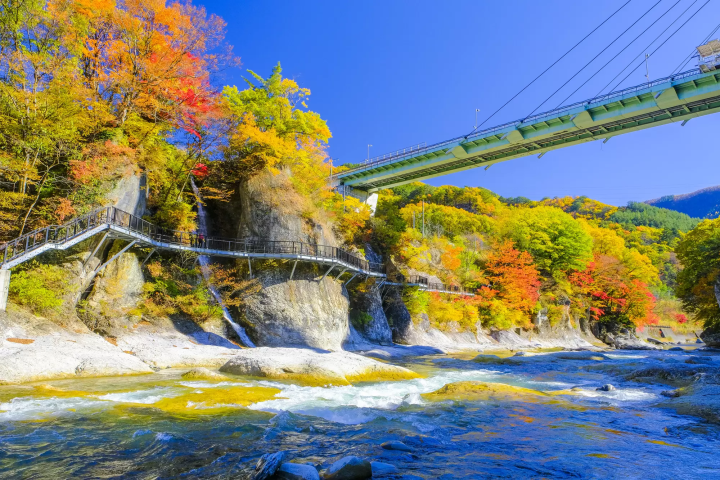
Photo by Pixta
Suwakyo Gorge
As a symbol of Minakami, the bridge at Suwakyo Gorge crosses the the Tone River, where visitors can see enjoy a sight of Mt. Tanigawa during all four seasons and enjoy the splendor of the gorge with its oddly strangely rocks and unique stone structure. It also goes across the Joetsu Line and is the gateway to Minakami Onsen Town that connects many major regional roads. In recent years, it has become a popular spot for bungee jumping.
Visitors can explore scenic walking paths that wind through lush greenery, making it a perfect spot for photography and nature lovers. The gorge is especially vibrant in the autumn months when the leaves change color, painting the landscape in brilliant hues of red and gold. Don’t forget your camera—each turn offers breathtaking views.
Suwakyo Gorge
Address: Gunma, Minakami, Suwakyo
Access: From JR Minakami Station, take the bus for about 25 minutes to Suwakyo.
Website: https://www.enjoy-minakami.jp/pdf/suwakyo.pdf
Lake Naramata
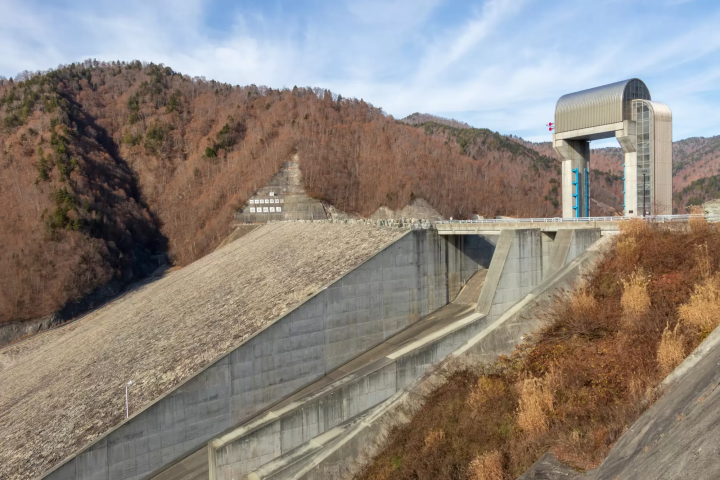
Photo by Pixta
Lake Naramata is a man-made lake, created with the Naramata Dam. Located deep in the nature rich Fujiwara district, you can enjoy auto-camping in the summer time here. Naramata Dam is a relatively new type of damn known as a rock-fill style dam, being built in 1989. From the dam's observation deck, which also houses a museum, you can enjoy the colorful panorama of the Okutone region.
At the Naramata Dam site you'll find the Naramata Service Center, a restaurant, and a shop. In the snack corner, we recommend trying the dam curry, a curry dish shaped to resembled the Naramata Dam. Take a stroll around the lakeside during any of the four seasons to soothe your soul, and then take a break with a nice cup of coffee. Depending on the season, you can find that local agricultural products are being sold.
Lake Naramata
Address: Gunma, Tone-gun, Minakami, Fujiwara
Access: Take a bus from JR Minakami Station to Lake Naramata, approximately 30 minutes away.
Website: https://www.enjoy-minakami.jp/place.php?itemid=937
Tanigawadake Ropeway
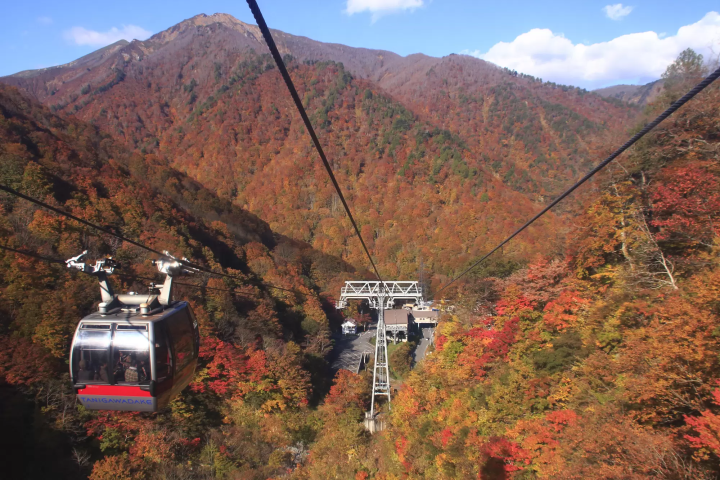
Photo by Pixta
Mt. Tanigawa is one of Japan's 100 most famous mountains. To reach Tenjindaira you can take the ropeway. Experience breathtaking panoramic views while you take a 15-minute trip through the air along the 2,400m long mountain.
At the top of Mount Tanigawa, you can immerse yourself in nature and enjoy a variety of outdoor activities. In summer, hiking trails lead through wildflower-filled meadows, while in winter, the area transforms into a snowy wonderland for skiing and snowboarding. At the summit, you can relax at the observation deck and marvel at the majestic mountains.
Tanigawadake Ropeway
Address: Gunma, Tone District, Minakami, Yubiso
Access: Take a bus from JR Minakami Station to the Tanigawadake Ropeway station, approximately 25 minutes.
Website: https://www.tanigawadake-rw.com/en/
Things to do in Minakami
Whitewater Rafting
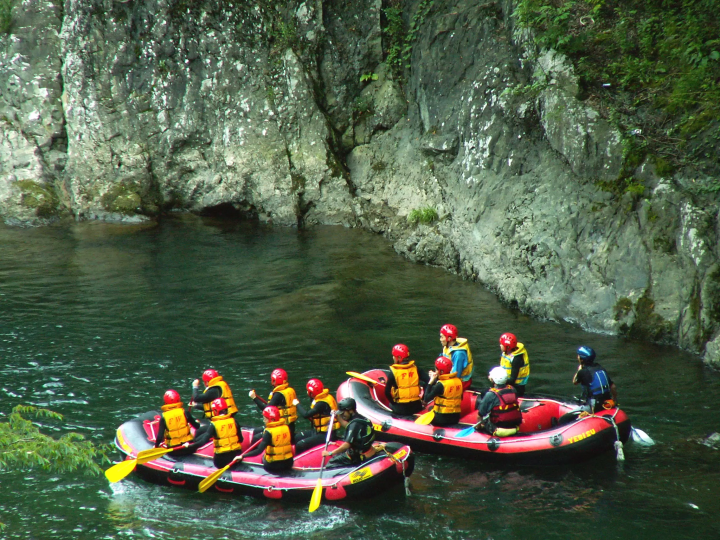
Photo by Pixta
Dive into the thrilling adventure of whitewater rafting in Minakami, renowned for its exhilarating rapids and stunning scenery. Whitewater rafting is a watersport where you board a large rubber boat, which can carry up to eight people, and paddle together down river rapids.
Guided tours are available and cater to all experience levels, from beginners to seasoned rafters.
The experienced guides ensure safety while providing insights into the local ecology and history. After an adrenaline-packed day on the river, enjoy a relaxing soak in one of Minakami’s famous hot springs to unwind. Whether you're with friends, family, or on a solo adventure, whitewater rafting in Minakami offers unforgettable memories.
Whitewater Rafting
Address: Gunma, Tone, Minakami Town (Depending on which sport shop you choose.)
Access: About 9 minutes by car from Minakami Station
Website: https://www.enjoy-minakami.jp/outdoor.php?catid=13&blogid=6
Eco Hiking in Ichinokurasawa Valley
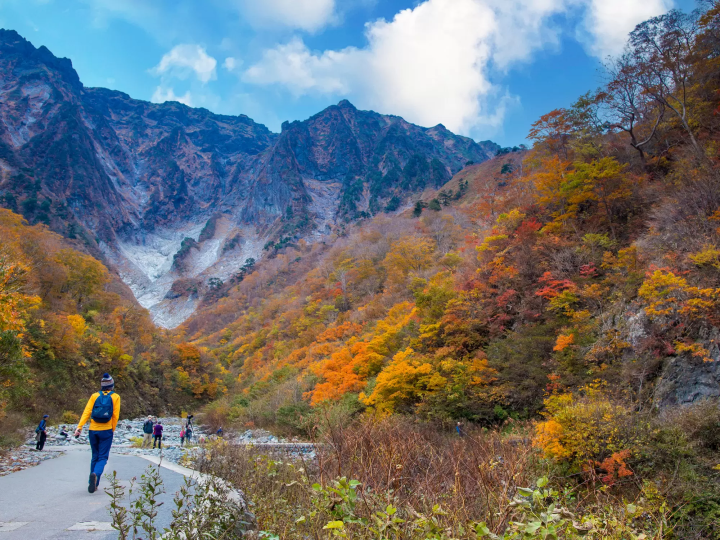
Photo by Pixta
Discover the enchanting Ichinokurasawa Valley at the foot of Mount Tanigawa, where eco hiking combines adventure with environmental awareness. The well-marked trails wind through pristine forests and alongside sparkling streams, making it a paradise for nature lovers.
Along the hike, you’ll encounter a diverse range of flora and fauna, and knowledgeable guides share insights into the local ecosystem. The area is known for its tranquility and breathtaking views, offering ample opportunities for photography and reflection.
Whether you’re an avid hiker or just looking to enjoy a peaceful day outdoors, Ichinokurasawa Valley provides an immersive experience in Japan’s natural beauty.
Ichinokurasawa Valley
Address: Gunma, Tone District, Minakami, Yubiso
Access: Take a bus from JR Minakami Station to the Tanigawadake Ropeway station, approximately 25 minutes.
Website: https://www.enjoy-minakami.jp/event.php?itemid=1443
Fujiwara Ski Resort
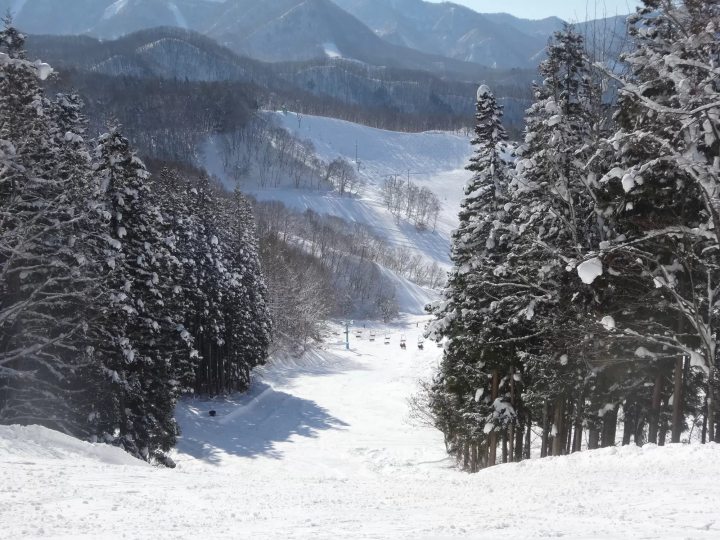
Photo by Pixta
The Fujiwara Ski Resort is designed with gentle slopes and spacious courses, and allowing you to see the whole area, making it a ski resort that's suitable even for families with small children. The altitude is 1,402 meters, and the base is around 1,270 meters. There are four beginner courses, two intermediate courses, and three advanced courses, so people of all skill levels can enjoy this resort.
Hotel Sunbird, connected directly to the slopes, boasts a hidden hot spring, the Okutone Onsen, and offers a great deal on accommodation packages.
Fujiwara Ski Resort
Address: Minakami Highland/Okutone Onsen Fujiwara Ski Resort - Gunma, Tone, Minakami, Fujiwara 4957
Website: https://fujiwaraski.com
Local Food in Minakami
Kadoya Soba
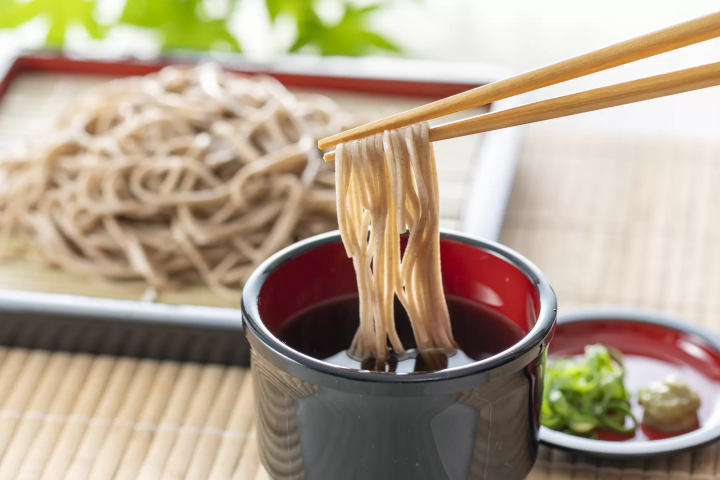
Photo by Pixta
Founded 250 years ago, Kadoya continues to carry on their traditional soba noodle recipe. The secret to the deliciousness of their soba is them using the clear, natural water that flows through the mountain behind the restaurant. The soba noodles are smooth and have a refreshing flavor of green onions and wasabi. They close when they sell out, so we recommend coming early.
Kadoya Soba
Address: Gunma, Tone-gun, Minakami-machi, Kochi 189-1
Access: 10 to 15 minutes by taxi or bus from Minakami Station
Website: https://kadoya-soba.com/ (Japanese)
Amenimo Makezu
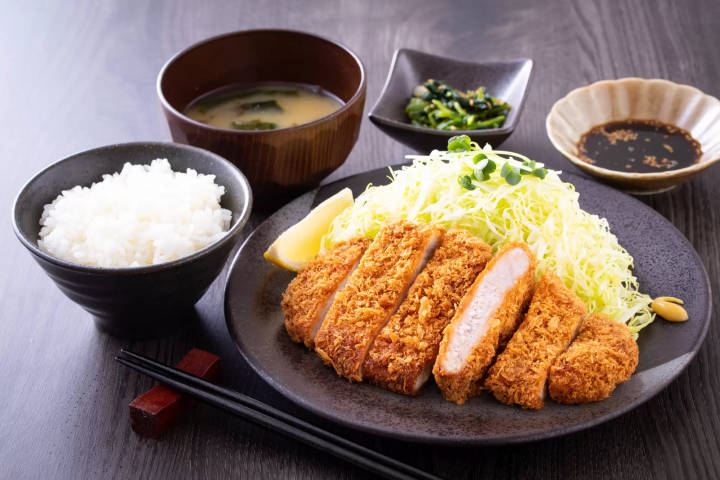
Photo by Pixta
Amenimo Makezu has a homey atmosphere and was created with the concept of being a place where you can eat delicious food, drink, talk, and have a good time with your friends. The recommended lunch menu, the 3 cut tasting set is 2,580 yen. It includes 3 types of pork (Yamato pork, Akagi pork, and Mugi pork) as well as a vegetable platter and a side of noodles.
Amenimo Makezu
Address: Gunma, Tone-gun, Minakami-machi, Yubara 759-1
Access: 10 to 15 minutes by taxi or bus from Minakami Station
Website: https://amenimomakezu.net/ (Japanese)
Tsukiyonotei Ginnotsuki
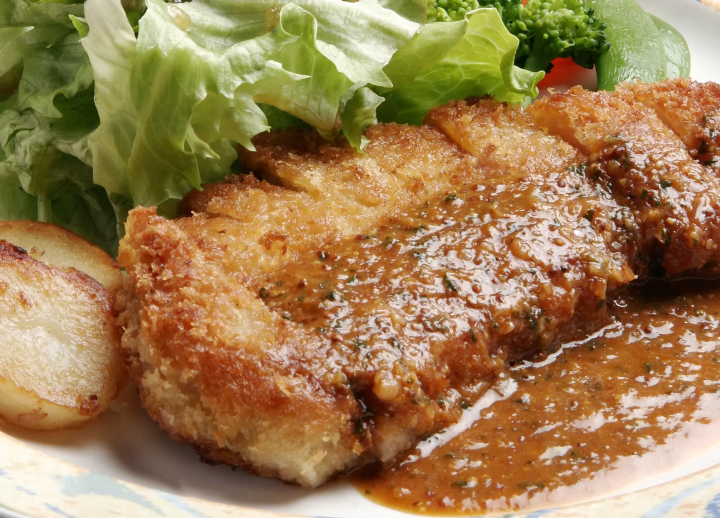
Photo by Pixta
Tsukiyonotei Ginnotsuki serves fried dishes such as pork cutlets, using only with pork from Gunma Prefecture. The Gunma Prefecture Mochi Pork Rump Cutlet is prepared with the particularly tender part of the thigh, allowing you to fully enjoy the delicious flavor of the meat. For rice, you can pick between white rice or 15-grain rice. All the fried dishes use a light batter and are not greasy at all. Their fillets are also very juicy.
Tsukiyonotei Ginnotsuki
Address: Gunma, Tone, Minakami Town Office 1042
Access: 7 minutes by car from Gokan Station
Website: http://tsukiyonotei-ginnotsuki.com/ (Japanese)
Minakami Fruits Land Mogitore
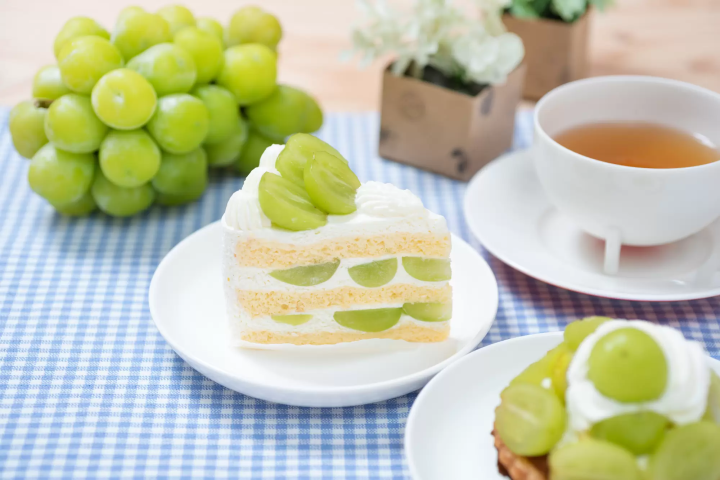
Photo by Pixta
At Minakami Fruits Land Mogitore you can enjoy homemade gelato prepared with fresh milk and cakes packed with fruit. The cafe space has a distinctive interior with a wood stove and tree lights. You can also enjoy their terrace seating, relaxing in the open air. Enjoy overlooking the Mogitore Orchard at the foot of the mountain and Mount Akagi in the distance.
Minakami Fruits Land Mogitore
Address: Gunma, Tone, Minakami, Shinmaki 5-10
Access: 22 minutes by bus from Jomo-Kogen Station
Website:https://www.mogitore.jp/english/
Garba Cafe
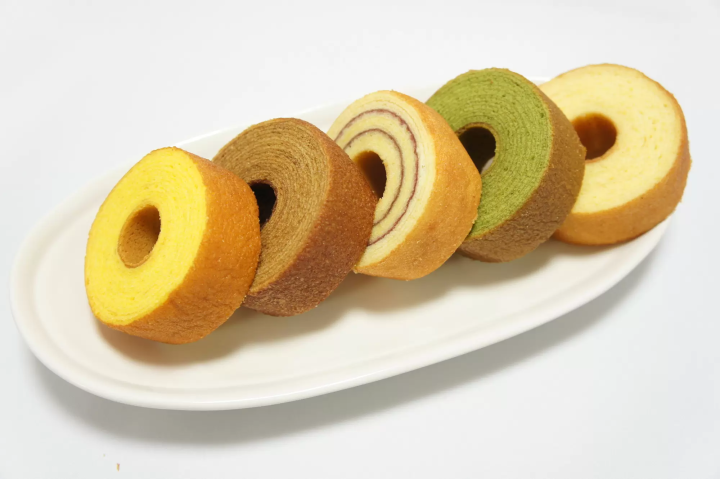
Photo by Pixta
Garba Cafe's famous baumkuchen was chosen as one of the top 10 baumkuchen in Japan by experts and was featured in the newspaper. Their baumkuchen, made with domestic wheat and locally-grown eggs, is perfect to pick up as a tasty souvenir.
Why not have a relaxing time in a stylish cafe surrounded by the Minakami mountains? The freshly baked baumkuchen sweets set, available only be eaten there, is extra popular!
Garba Cafe
Address: Minakami-machi, Oana 815-3
Access: 5 minutes by taxi from Minakami Station
Website: https://www.garba.jp/ (Japanese)
Recommended Japanese-style Inns at Minamikawa Hot Springs
A Lodging Where the Moon Smiles - Ominekan

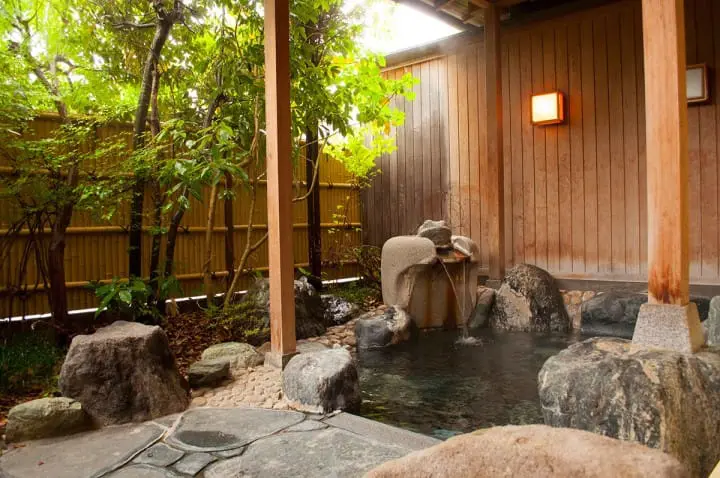

Photos provided by: Minamikawa City Tourism Association
Inside the grounds here are both indoor bathtubs and a free-flowing open-air bath which pumps water up from the source of the hot springs. They say that the baths here will warm up your body from the inside out. The hot springs here are available 24 hours a day, so you can enter whenever you’d like.
For dinner, you can enjoy a traditional Japanese meal where different dishes are served on individual trays. The select Japanese cuisine here features plentiful seasonal ingredients from the area, and their course featuring Japan's Joshu beef is said to be astounding.
Address: Gunma, Tonegun, Minakami, Ishikura, 229
Website: http://www.oominekan.jp/ (Japanese)
Bijin no Yu and Picked Vegetable Cuisine - Sanazawa Terrace
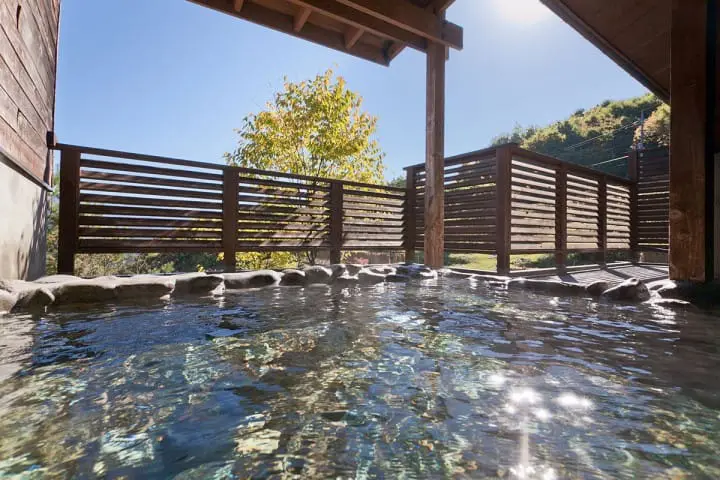

Photos provided by Minamikawa City Tourism Association
This inn's hot spring source is alkaline, so after bathing in the Bijin no Yu (beauty bath), you will notice a dramatic change in the texture and quality of your skin. From their open-air bath you can gaze out at a charming rice paddy as well.
Edible wild plants and vegetables that are picked locally are used in their special picked vegetable cuisine, which is an original dish produced by this accommodation. Included in this menu are tempura, along with homemade konjac. This is one menu that has a good reputation for being both delicious and healthy.
There’s also a plan for one day visitors that includes both lunch and dinner.
Address: Gunma, Tonegun, Minakami, Tsukiyono, 2537-2
Website: https://sanazawa.jp/en/
Minamikawa Kogen Hotel 200


Photos provided by Minamikawa City Tourism Association
This hotel is especially well-known for its Bijin no Yu spring, which has both an alkaline and simple sulfur hot spring. Their spacious bathhouse has a large window that grants bathers a panoramic view of the mountains outside.
In the evening there is an all-you-can-eat dinner buffet where you can enjoy 60 different kinds of Japanese and western dishes, all of which use a plentiful amount of local ingredients. All rooms here are Western-style.
Inside the grounds of the hotel, there is also a pool, golf course, and trekking course. In the winter months, the trekking course becomes a ski resort where guests can enjoy skiing, snowboarding, and snowmobiling.
Address: Gunma, Tonegun, Minakami, Fujiwara, 6152-1
Website: http://www.minakamikogen200.jp/en/
Tourist Spots and Regional Cuisine Near Minamikawa Hot Springs
In Minamikami, at the river head of the Tone River, there are what’s known as the four Okutone lakes: Lake Dogen, Lake Fujiwara, Lake Tone, and Lake Naramata. These are incredibly beautiful lakes.
Each of these lakes has its own dam for storing water; there’s the Sudagai dam, the Fujiwara dam, the Yagisawa dam, and the Naramata dam. These dams are all important tourist spots. The ‘Minakami Dam Curry’, which is a Japanese curry and rice dish where the rice is formed into the shape of a dam, has become one of the representative dishes of the area. You can enjoy numerous variations on this dish at restaurants throughout the town.
Along with food, there are studios throughout the town that make traditional handicrafts such as Japanese paper, bamboo ware, ceramics, masks, and so on. There are even places where you can try making these items yourself, which are experiences that are sure to make for some fantastic memories of your trip.
The city of Minamikami, a place where untouched nature still remains. With beautiful landscapes, impeccable hot springs, and gourmet cuisine, why not come to Minamikami and refresh your body and spirit?
For those who would like more detailed information on how to properly enter a hot spring, please take a look at Bath Culture In Japan: What Every Visitor Should Know Ahead Of Time’.
This is the official account of MATCHA's editorial department. Our articles feature useful travel information for visitors to Japan, from how-to guides to recommended places to visit.













































![[Just a short distance from Nagoya] Popular Taiwanese YouTuber Alan tours Aichi, Tokoname!](https://resources.matcha-jp.com/resize/720x2000/2026/01/08-255181.webp)


